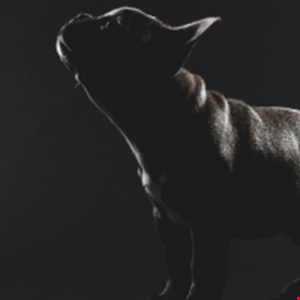- I'm a laptop expert, and these are the Memorial Day laptop deals I'd grab this weekend
- I'm an audio expert and these are the Memorial Day headphone deals I'd recommend to my friends and family
- I prefer this budget wireless iPhone charger over Apple's MagSafe devices - here's why
- One of my favorite Bluetooth speakers is from Sony and it's on sale for the first time ever
- Want to upgrade your home's tech? First, assess your energy maturity - here's how
Pet Dog Unmasks Drug Trafficker on Encrypted Chat

Law enforcers uncovered the identities of two drug traffickers after they unwittingly took photos of themselves and a pet dog and sent it via a chat platform they thought was encrypted, according to the National Crime Agency (NCA).
The UK agency for serious and organized crime said that Danny Brown, 55, of Kings Hall Road, Bromley, and Stefan Baldauf, 62, of Midhurst Road, Ealing, were jailed earlier this year, for 26 and 28 years respectively.
Their identities were uncovered as part of Operation Venetic, UK law enforcement’s response to the 2020 takedown of EncroChat – an encrypted chat platform used by criminals the world over.
Although it’s unclear exactly how police managed to crack the system, the repercussions have been felt for the past two years. EncroChat is said to have been used by 60,000 individuals worldwide, 10,000 of whom were in the UK.
However, because users only referred to themselves by pseudonyms in chats, the NCA still had to uncover the identities of Brown and Baldauf.
They did so after the duo unwittingly took photos of themselves – Brown by sending a photo of a TV with his face reflected in it, and Baldauf by sending a photo of a brass door sign with his face visible in the reflection.
Brown also made the mistake of sending an image of his pet dog Bob to Baldauf. NCA investigators said they were able to zoom in on the pet’s tag to reveal a phone number belonging to Brown’s partner.
The duo were convicted along with several others of a plot to send 448kgs of MDMA worth £45m ($55m) to Australia, hidden in a 40-tonne industrial digger.
NCA operations manager, Chris Hill, said the organized crime gang went to great lengths to ensure their plot was successful.
“These men thought they were safe on EncroChat but my officers did a superb and painstaking job of building the evidence against them through a mixture of traditional and modern detective skills,” he added.
“Brown and Baldauf’s accidental selfies and the photo of Bob the dog were the cherry on the cake in proving who was operating those handles.”

